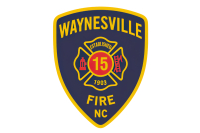A snowflake by any other name
It was one of those rare winter mornings when Haywood County Schools were on a two-hour delay. Izzy, my second-grader, and I dropped her sister, Maddy, at First Methodist’s outstanding daycare center, blasted by Smoky Mountain Coffee Roasters, grabbed a cuppa joe for me and a cuppa jack (hot chocolate) for her and struck out for Walker in the Hills and the nether reaches of Old Fiddle Road to feed Thomas the cat.
It was mostly clear and sunny, a few high clouds here and there and cold, around 15 degrees Fahrenheit. Looking up from The Great Smoky Mountains Expressway, the trees on the mountaintops looked like they had been flocked. They were just gleaming white. I thought it was rime.
But as we ascended Old Fiddle Road we began to notice little twinkling in the air like fairy dust in a Disney movie. By the time we reached the end of state maintenance on Old Fiddle, the twinkling had turned to sparkling flakes, slowly falling through the air, reflecting the sunlight like tiny mirrors.
I hesitated to call the flakes snow because they were clear (at least translucent). But they were large and definitely crystalline. The ones touching down on the windshield when we stopped at Thomas’ house were one-fourth to one-half inch in diameter. These crystals were flocking the trees and the mountaintops.
I don’t know who exclaimed, “Wow! Cool!” first, Izzy or me. But Izzy had the best description. She said it was like we were trapped in a snow globe and someone was shaking it.
The flakes bugged me because all the snow I had ever seen was white. So I did an Internet search and found “diamond dust.”
Related Items
The best description I found – though a little technical and some European spelling was from “The Weather Doctor” at http://www.islandnet.com/~see/weather/elements/ddust.htm.
Here are some excerpts:
“... At very cold temperatures, 40 degrees below zero (C or F) and colder, snow can actually fall out of the cleanest, clearest blue sky without intervening clouds. Temperatures need not be so cold if there is dust, or other minute particles, in the air on which the water vapour may deposit. When condensation nuclei are present, diamond dust may form at temperatures just below minus 20 degrees C (0 degrees Fahrenheit). At such temperatures, the water vapour in the air spontaneously forms ice crystals which slowly settle earthward. When these falling crystals are caught in the light, they sparkle like gemstones, a weather condition known appropriately enough as diamond dust.
“... At such low temperature, ice crystals form as irregular hexagonal plates, or as unbranched ice needles or ice columns directly from water vapour in the air. The formation of hexagonal-plate crystals is favoured at air temperatures from minus 10 degrees C to minus 20 degrees C (14 degrees F to minus 4 degrees F). Ice plates resemble dinner plates with a hexagonal pattern in their long dimension and are thin relative to their width. Ice columns, on the other hand, look like minute stubby pencils. Columns typically form in temperatures below minus 25 degrees C (minus 13 degrees F). They are long in comparison to their hexagonal cross-section. Larger column crystals fall with their long axis paralleling the ground, but at times, the falling columns may rotate like slow, miniature helicopter blades.”
It was definitely the hexagonal-plate crystal that Izzy and I observed at Thomas’ house the other morning.
Another great Web site for looking at snow crystals is Mark Cassino’s Snowflake gallery at http://www.markcassino.com/newsite/portfolios/snow/index.htm.
Happy winter-weather watching!
Don Hendershot can be reached at This email address is being protected from spambots. You need JavaScript enabled to view it.









